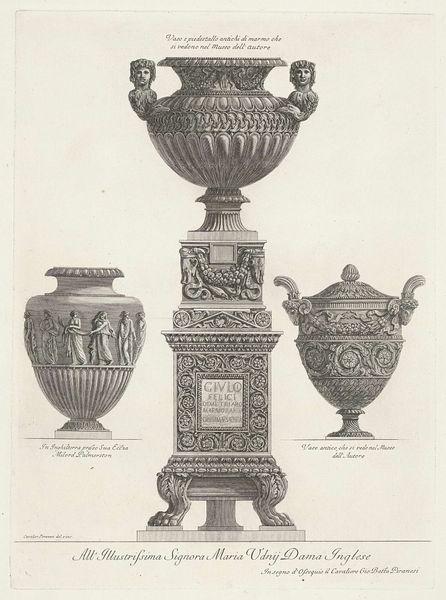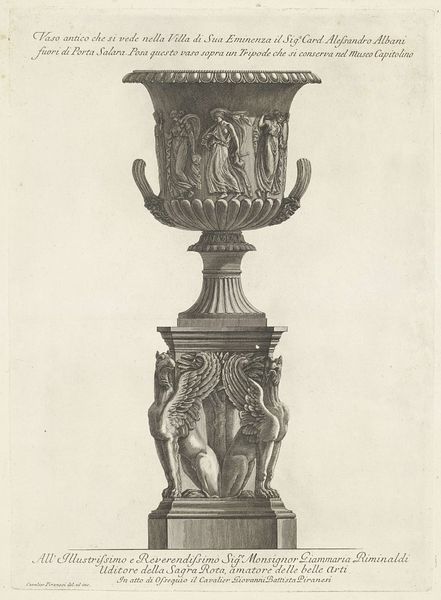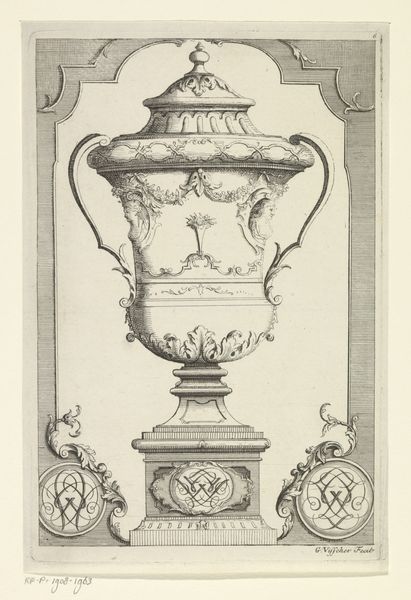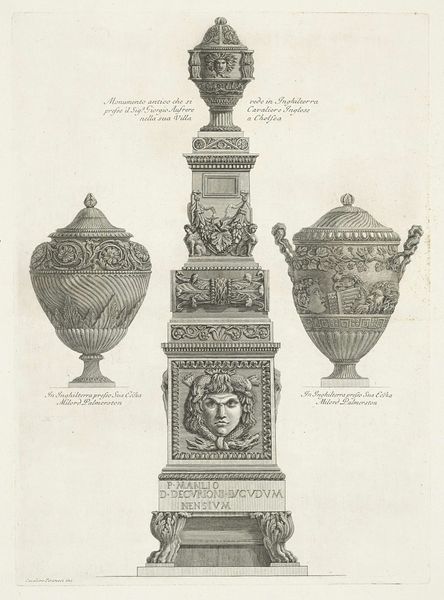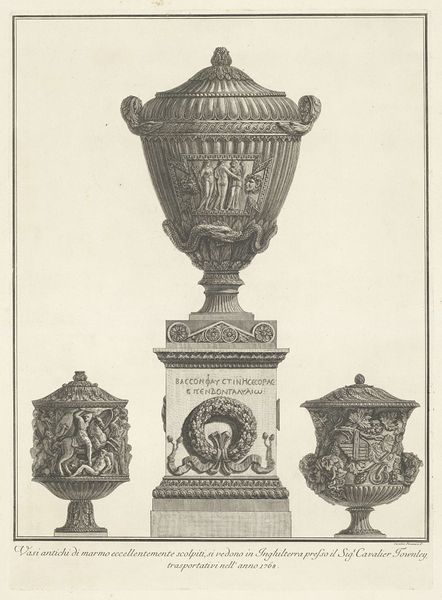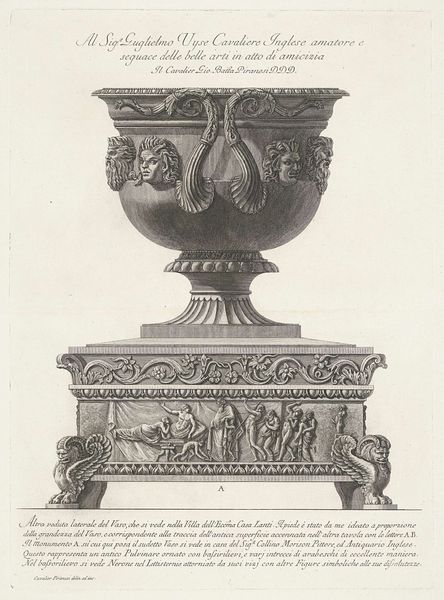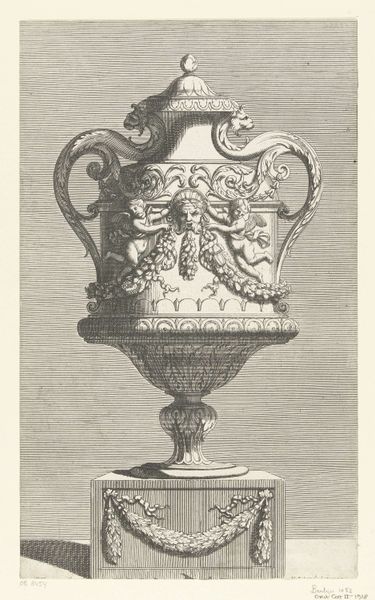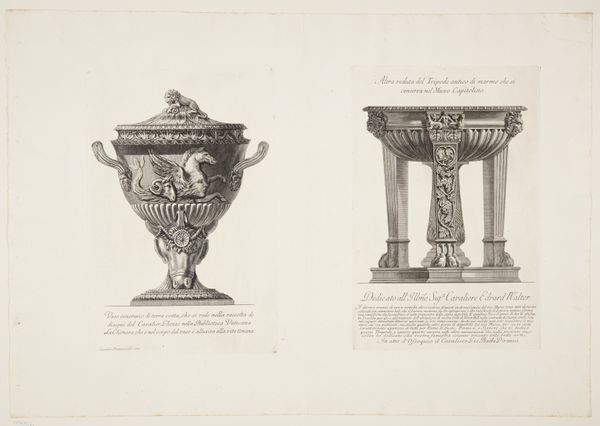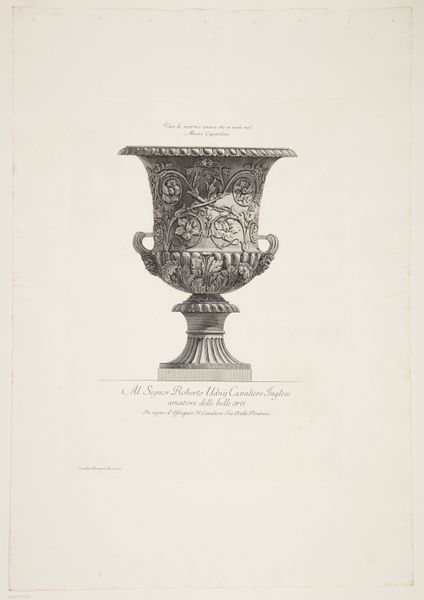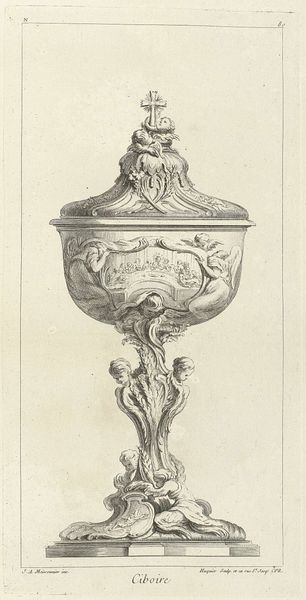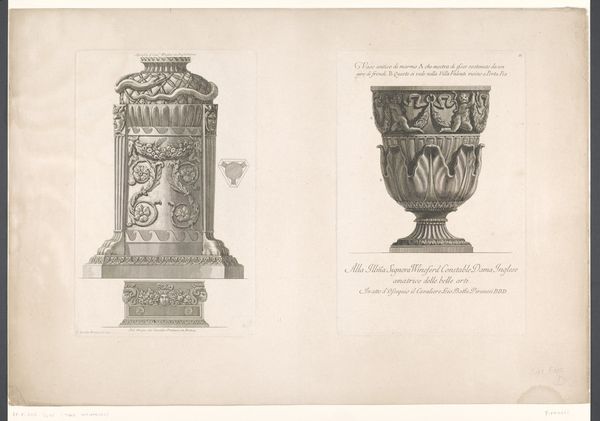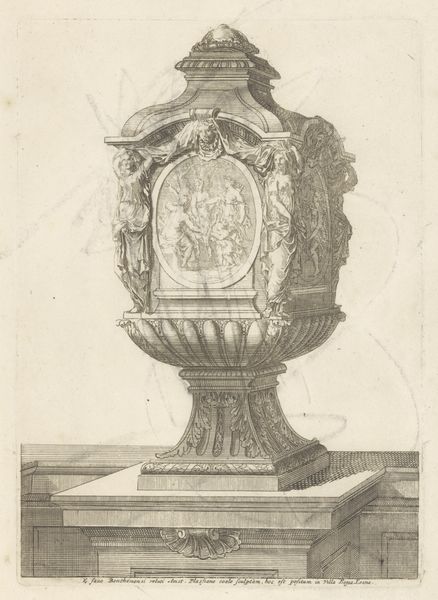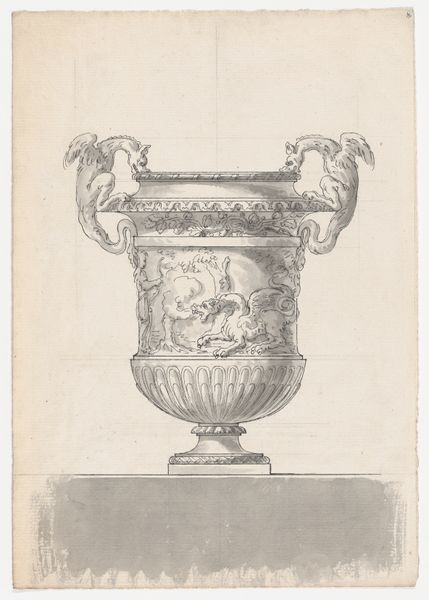
print, etching, engraving
#
neoclacissism
# print
#
etching
#
old engraving style
#
geometric
#
decorative-art
#
italian-renaissance
#
engraving
#
historical font
Dimensions: height 520 mm, width 387 mm
Copyright: Rijks Museum: Open Domain
Curator: Before us we have Giovanni Battista Piranesi's "Drie antieke vazen waarvan een op voetstuk," or "Three antique vases, one on a pedestal," dating to 1778. It's an engraving and etching printed on paper. What are your first impressions? Editor: It’s imposing. There’s an intense monumentality to these vases, especially the central one elevated on the pedestal. It almost feels like a declaration of power, rendered in the minute detail of etching. Curator: Precisely. Piranesi was fascinated by Roman antiquity. This print reveals a lot about eighteenth-century practices of collecting and the social value afforded to those ancient objects. Note how Piranesi presents them: meticulously depicted, practically architectural in their precision. Editor: Absolutely. It speaks to the 18th-century obsession with classifying and documenting, a scientific approach applied to art and history. But I also see a romanticized view of the past, where possessing and displaying these objects becomes a performance of status and education. What do we know about the original owners or commissioners of these vases? Curator: What we know, through the inscription at the bottom, is that the pedestal of the central vase could be seen in England, owned by His Excellence Milord Exeter. The dedication is addressed to Tomasso Palmer, an English knight, as a sign of appreciation. This was a commodity intended for wealthy elites to promote their association with good taste and classicism. Editor: It really underscores how the consumption of antiquities was interwoven with imperial projects and power structures. Who had access, who controlled the narrative, who benefited? The vases, even rendered as prints, are enmeshed within circuits of capital and cultural prestige. Curator: Yes, the very act of producing and disseminating these images shaped tastes and desires, making the ancient world both accessible and yet mediated through a very particular lens of class and national identity. Editor: Considering the detail, it seems time-consuming. One thinks about studio assistants and the division of labor, as well as the social status attributed to "high art" versus reproductive printmaking. This etching suggests the chasm may not be as large as traditionally assumed. Curator: I agree. The intense craftsmanship here, both technical and artistic, makes it undeniable that reproductive printmaking, under Piranesi, was in many ways elevated to the level of an art form in itself, demonstrating that materials, production and art value always occur in conversation. Editor: Exactly. This work has given me so much to consider, like the complicated web that connects art, society, and politics, which this work represents and is connected to, while also reminding us about the value that has historically been placed on the reproduction and distribution of art in printed form.
Comments
No comments
Be the first to comment and join the conversation on the ultimate creative platform.
